Mali
Things to Do
Mopti
Town
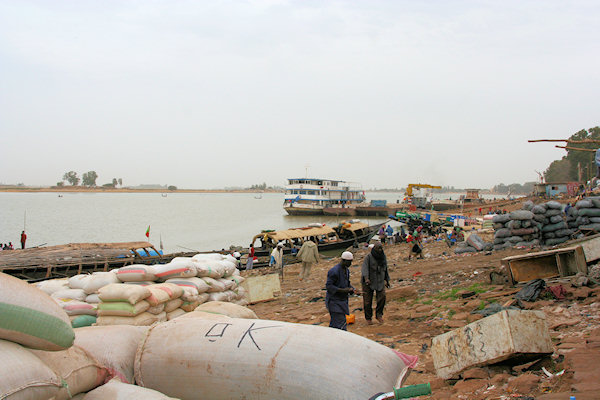 |
|||||
Mopti began its transition from a small Bozo fishing village to the commercial hub
of central Mali and the capital of the country's fith region at the start of the 19th century.
The importance of Djenné had gradually declining, and Mopti was seen as the ideal replacement -
first by the Peul emperor, Sékou Amadou, who was keen to develop the town's potential,
then by the French, who transferred the trading functions of Djenné to Mopti in 1893 when they
arrived in the region.
Mopti lives in the present rather than the past. Its commercial importance and ideal river
location mean that life is dominated by the daily activity around the busy port.
Port
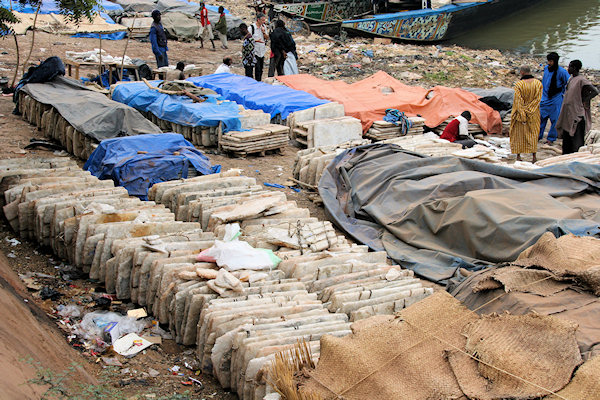 |
|||||
Although there is a weekly market on Thursdays, it is somewhat overshodowed by the
continually busy port - the essence of Mopti.
The main local industry is fishing and one side of the port is awash with dried and smoked
fish - which is also exported abroad.
One of the other principal commodities is salt, which is brought down the river in large
tablets from Timbuktu and the mines at Taoudenni. Salt comes in three categories: the
top-grade stuff has a smooth, layered texture, while the other two varieties are rougher,
the second quality being whiter than the third.
Wandering around the port you might also see dried onions from Dogon, country, along with the
millet and assorted spices typical of all West African trading centres.
Next to Restaurant le Bozo on the southern side of the port there are piroque-builders,
some of whom might be constructing the large pinasses which fan out around the harbour and can
carry up to 150 tonnes of cargo.
These are just some highlights of Mopti's port; there are plenty of others.
Komoguel
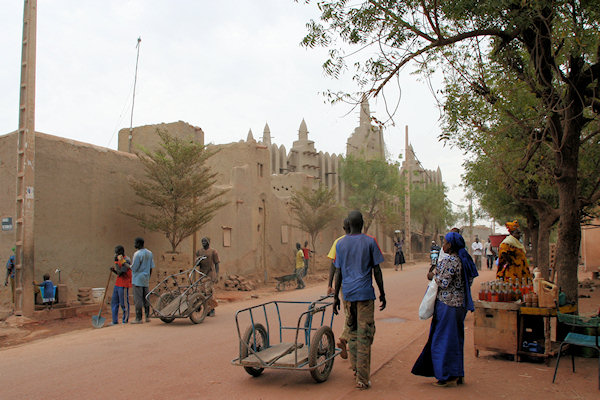 |
|||||
In the same way that Mopti inherited Djenné's trading functions, it also tried to emulate its
neighbour's architecture. These attemps are best viewed in the quater Komoguel, which has
retained many of the traditional banco houses typical of Djenné.
The town's main mosque is also in Komoguel. It was built in 1935 in the same style as the
mosque at Djenné and, although certainly not ugly, in this respect at least the new kid on the
block has failed to surpass its elder sister.
Niger Inland Delta
The foodplain of the River Niger extends almost as far as the fringes of the Sahara.
Sailing north from Mopti, sooner or later you will arrive at Lake Débo, the best
known of the several lakes in the inland delta region. Although some 30km in diameter, Débo is
shallow and, therefore, difficult for larger vessels to cross, especially on the numerous days
and nights when it is windy.
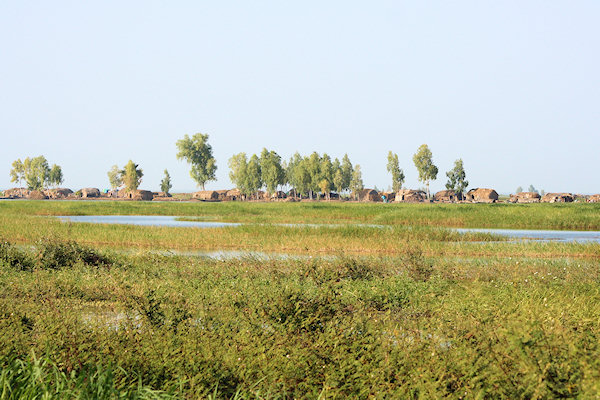 |
|||||
On the other hand, this is a popular spot for much of Mali's migratory birdlife, which comes to
the Niger floodplain to spend the winter. The best time to see various species of herons, ibises
and other Palaearctic waterfowl is around february, when the birds are concentrated on the remaining
patches of water.
Continuing downstrean, Niafounké is the home of the great African bluesman Ali Farka
Touré. Not surprisingly, Touré, who still lives here, has a hand in most of Niafounké's pies,
and the campement or Motel d'Ali Farka Touré is one of his main business concerns. It is
quite satisfactory and allows you to break a journey from Mopti to Timbuktu, for example, in this
typically Sahelian town. You might even get to meet the grat man!
Lake Débo and Niafounké are the two main stops for boats travelling downstream across the inland
delta. By the time you reach Diré, the next major town after Niafounké, the floodplain has
given way to the fringes of the Sahara. Diré has a basic and rather derelict campement with
rooms and a terrace for camping.
There are, of course, many smaller towns and fishing villages throughout the Niger Inland Delta,
which are almost always pituresque and which often have their own 'matchbox' version of the
Djenné Mosque.
Some tour operators offer river excursions to fishing villages, the lakes and other places of
interest.
Otherwise, getting to these riverine locations will involve renting a piroque and a decent quide,
or travelling by pinasse publique, which will cut the cost tremendously.
As a rough guide, count on at least three days or two nights for the journey from Mopti to Timbuktu.
Timbuktu
History
Timbuktu was founded at the beginning of the 12th century by Tuareg nomads who probably used it as a storage centre for their property and grain whilst they were in the desert. Not much is known of the town's early history, except that it was brought within the Mali Empire around 1275 and was visited by Kankan Moussa on his way back from Mecca in 1325.
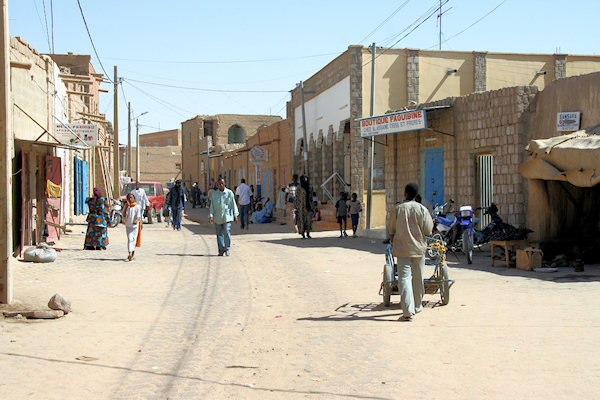 |
|||||
At the end of the 14th century Timbuktu - lying on the edge of the desert and so accessible to
caravans bringing salt from Téghazza, and about 10km from the River Niger, down which gold from the
south could be transported - became an important trading point.
But trans-Saharan trade was not restricted to gold and salt; by 1468, when Sonni Ali Ber captured Timbuktu
for the Songhay, the market at Timbuktu did a brisk trade in gold, kola nuts, ivory, ostrich feathers and slaves
from the south, and salt, copper, tin, cloth and horses from the north.
Timbuktu enjoyed its golden years under the Akia dynasty, which ruled the Songhay Empire from 1493
to 1591. In the mid-16th century there were approximately 150 Islamic schools in Timbuktu and
students came from as far afield as North Africa and the Middle East, drawn by an academic
reputation second to none in the western Sudan.
Timbuktu slipped into decline when the Moroccans took over in 1591 and astablished the town as
their headquarters. Under Mali and Songhay rule, the region had prospered through stable and
peacefull government; Moroccan control, however, was less effective, and the pashas and
their descendants, the Arma, were unable to protect Timbuktu from Bambara, Peul and Tuareg
raids.
Eventually, in 1737, the Tuareg had a decisive victory over the Arma. and became the dominant
power in Timbuktu.
When the French arrived, in 1893, the town has lost its great trading importance.
Discovering Timbuktu
During the 11th century, various Arab geographers and chroniciers were writing about the
ancient Ghana Empire ant its capital at Koumbi Saleh. One of the erliest accounts of Koumbi,
was provided by the Mesopotamian traveller, Ibn Hawkal, who wrote in his traveloque,
On the Shape of the Earth, about a land of fabulous wealth and a great river which flowed
to the east and therefore, was surely the upper course of the Nile.
The famous Moroccan explorer Ibn Battuta, was another early pioneer of travel to Mali. In
1352, he crossed the Sahara with a camel caravan and arrived in Timbuktu, where he wrote a detailed
record of the city's early growth.
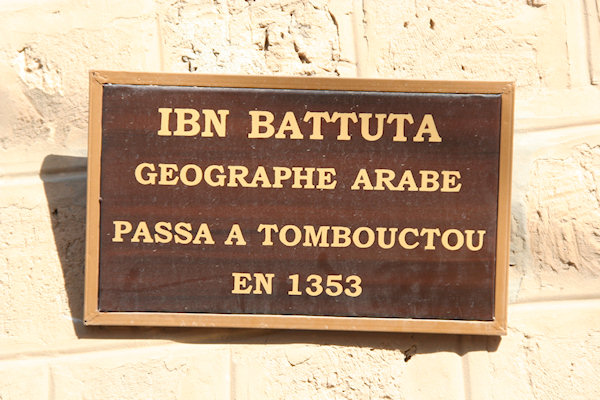 |
|||||
These forays into Mali by early explorers and their written accounts of a land of untold riches,
as well as stories heard at trading posts on the west coast of Africa about a mysterious river and
a fabled city of gold, had caught the imagination of the Europeans. In 1788 a group of English
gentlemen formed The Association for promoting the Discovery of the Interior Parts of Africa
which became known as the Africa Association: two of its main priorities were to discover the source
and flow of the River Niger and the city of Timbuktu.
After two abortive attempts the Africa Association sent Daniel Houghton, who set off up the
River Gambia in july 1790, only to be robbed and left to die by Muslim tribesmen in what is now
eastern Senegal.
Mungo Park's first expedition started as inauspiciously as Houghton's failed attempt to
discover the Niger five years earlier. He set off up the River Gambia in december 1795, reaching
Ségou in july 1976 after having been deserted by his companions and robbed and tortured by local
Muslim kings. Park wanted to continue down the Niger to Timbuktu, but only got as far as
Sandanding before sickness forced him to abandon the journey. His second expedition left
Sansanding in november 1805. Five years later the british government tracked down his guide, who
explained what had happened to Park and his friends. they had continued down the Niger,
passing
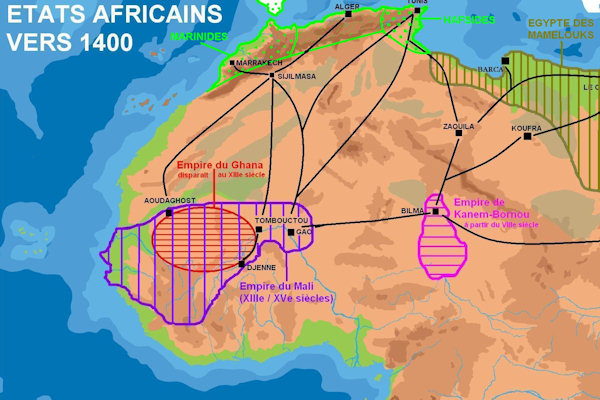 |
|||||
In july 1825 Major Alexander Gordon Laing led an expedition across the Sahara, ostensibly
to discover the source of the River Niger. he joined a camel caravan heading south and, after a
close encounter with the Tuareg in the desert, became the firts european to set foot in Timbuktu
on august 1826. He stayed in the city for about six weeks before joining another caravan heading
north. two days out of Timbuktu he was stopped by the Tuareg and killed with a spear through the
heart.
Fearing the hostile reception that he would recieve as a christian in an islamic land, René
Caillié spent nine months living with a muslim tribe on the banks of the river Senegal in
preperation for his trip. He learnt Arabic and studid the Koran so that he would be able to pass
himself off as a Muslim. this tactic paid dividends as he travelled through Mali in 1828, visiting
Djenné in march and arriving at Timbuktu by boat in april. The following month he joined a caravan
heading north and travelled safely through Tuareg country, thus becoming the first european to visit
Timbuktu and return home to tell the tale.
Heinrich Barth is best known for his five-year expedition across the Sahara to lake Chad. In
september 1853 he arrived at Timbuktu, having travelled overland disguised as a Toareg.
They houses in Timbuktu where Laing, Caillé and Barth stayed - along with those of later explorers
who reached the city - can still be seen today.
Mosques
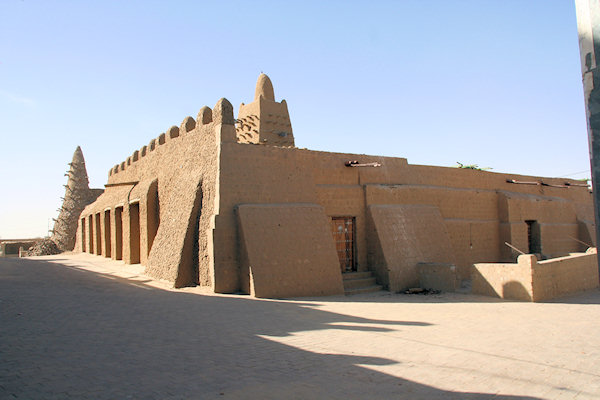 |
|||||
The Djingareiber Mosque is the oldest, arguably the most interesting and probably the
landmark most closely associated with Timbuktu. Built in 1325 by an Andalucian architect and poet,
Es Saheli, on the orders of Kankan Moussa, who had just returned from his pilgrimage to Mecca
full of religious zeal, the Djingareiber Mosque is shaped like a pyramid at its base and has conical
towers.
The other two mosques were built some time during the 15th century. The Sankoré Mosque is
small and simple, which adds some credence to the story that it was built by a berber woman, to
resemble the Ka'bah or the house of God at Mecca. During the 15th and 16th centuries,
Timbuktu's famous University of Sankoré was also based here.
The Sidi Yéhia Mosque, meanwhile is the least attractive of the three, although there is a
wrought-iron door which is as good an example of this feature of the town's architectures as you'll
find.
Museum
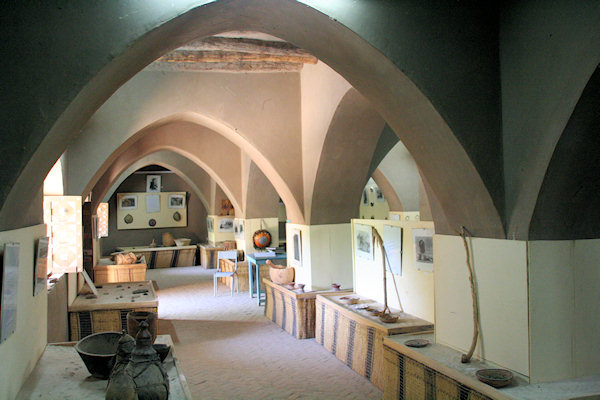 |
|||||
The Timbuktu Museum is quite good and worth a visit. It's close to Sidi Yahya Mosque and has a
good collection of old photos and an interesting mix of artifacts and contemporary folk art.
Accoriding to a legend, the town owes its name to a distortion of the Targui (tuareg) word tin
and Bouctou. It is said that a woman called Bouctou watched over the Tuareg well (or
The Manuscripts of Timbuktu cover diverse subjects such as mathematics, chemistry, physics,
optics, astronomy, medicine, Islamic sciences, history, geography, the traditions of The Prophet
(peace be upon him), government legislation and treaties, jurisprudence and much more.
Today, this entire African intellectual legacy is on the verge of being lost. The brittle condition
of the manuscripts i.e. pages disintegrate easily like ashes, the termites, insects, weather, piracy
of the manuscripts, and the selling of these treasures to tourists for food money pose a serious
threat to the future of the manuscripts of Timbuktu.
There are a few private libraries in town, where some manuscripts can be seen.
Tuareg
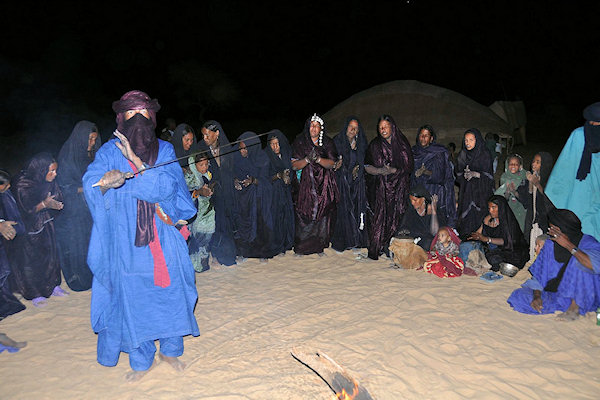 |
|||||
As decendants of the Berbers, the Tuareg of northern Mali are lighter-skinned than
the majority, and are therfore reffered to as whites; the tuareg however, call themselfve
Tamasheq, after the language they speak.
Tuareg society is highly organised and run along feudal lines. Woman have an important role in the
decision-making prosess, while historically, black captives have been used as slaves - one of the
reasons, perhaps, for the anomosity between Mali's Negro majority and the Tuareg.
Around Timbuktu it's possible to visit a tuareg camp; where they can perform a local dance